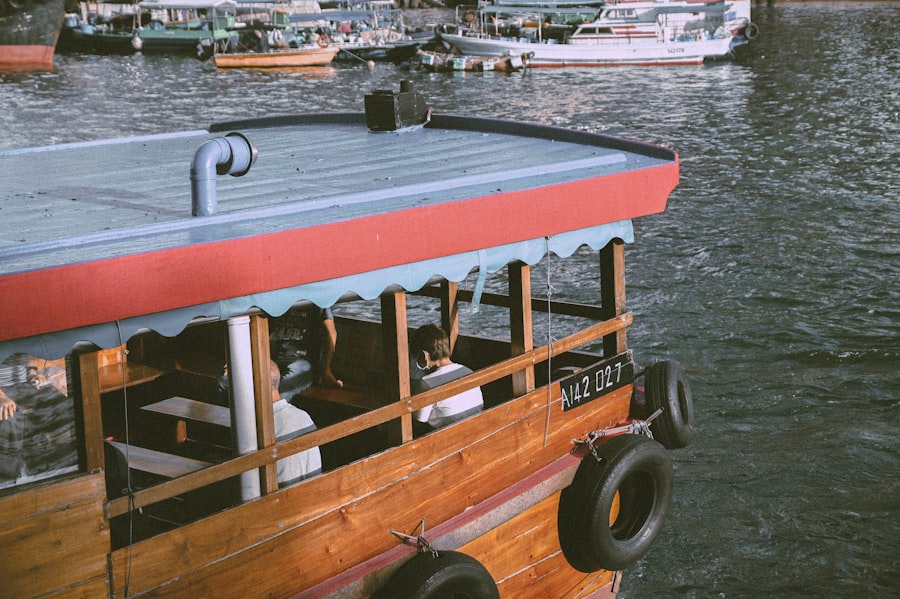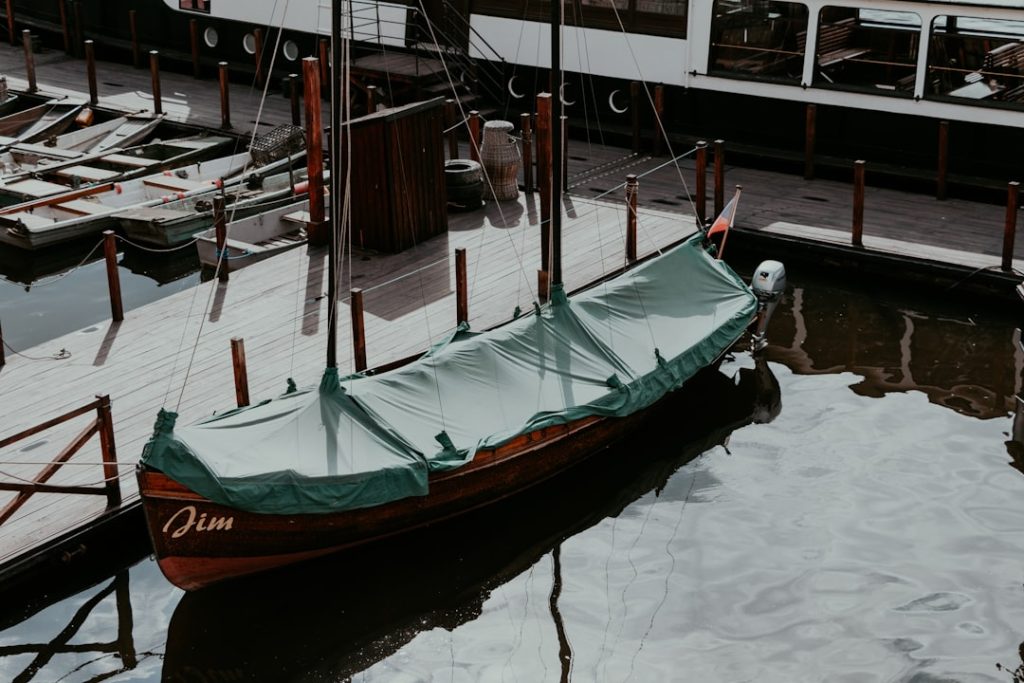The Golden Age of Boat Advertising, spanning from the late 19th century to the mid-20th century, marked a transformative period in the maritime industry. This era was characterized by a burgeoning interest in leisure boating, spurred by advancements in technology and an increase in disposable income among the middle class. As more people sought escape from urban life, boat manufacturers began to recognize the potential of advertising as a means to capture the imagination of potential buyers.
The advertisements of this time were not merely promotional tools; they were artistic expressions that encapsulated the spirit of adventure and the allure of the open water. During this period, print media became the primary vehicle for boat advertising, with magazines and newspapers serving as platforms for colorful illustrations and compelling narratives. The ads often featured idyllic scenes of families enjoying their time on the water, evoking a sense of freedom and leisure that resonated deeply with consumers.
The imagery was carefully crafted to reflect the aspirational lifestyle associated with boating, showcasing not just the vessels themselves but also the experiences they promised. This era laid the groundwork for modern advertising techniques, blending art and commerce in a way that would influence countless industries in the years to come.
Key Takeaways
- Vintage boat advertising thrived during a golden age, showcasing iconic brands with memorable ads.
- Nautical themes and imagery were central to the appeal of classic boat advertisements.
- Advertising techniques evolved over time, reflecting changes in marketing and design trends.
- Collecting and preserving vintage boat ads has become a popular hobby among enthusiasts.
- Nostalgia and the charm of vintage boating culture continue to drive interest in classic boat ads.
Iconic Brands and Their Vintage Ads
Several iconic brands emerged during the Golden Age of Boat Advertising, each leaving an indelible mark on the industry through their innovative marketing strategies. One such brand is Chris-Craft, renowned for its luxurious wooden boats that epitomized elegance and craftsmanship. Their vintage ads often featured stunning visuals of their boats gliding through serene waters, accompanied by taglines that emphasized quality and sophistication.
The imagery was designed to evoke a sense of exclusivity, appealing to affluent consumers who sought not just a boat but a status symbol. Another notable brand is Century Boats, which gained popularity for its high-performance vessels. Their advertisements frequently highlighted the thrill of speed and adventure, showcasing boats racing across waves with dynamic angles and vibrant colors.
The use of action shots in their marketing materials was revolutionary at the time, capturing the excitement of boating in a way that resonated with younger audiences. These brands not only sold boats; they sold a lifestyle, creating a narrative around their products that transcended mere functionality.
Nautical Themes and Imagery in Vintage Boat Ads

Nautical themes and imagery played a pivotal role in shaping the aesthetic of vintage boat advertisements. The use of maritime symbols—such as anchors, sails, and lighthouses—was prevalent, serving to evoke a sense of adventure and connection to the sea. These elements were often intertwined with romanticized depictions of coastal landscapes, where sun-drenched beaches met azure waters.
Such imagery was not just decorative; it was a strategic choice aimed at tapping into the emotions associated with boating. The color palette used in these ads also contributed to their nautical appeal. Shades of blue and white dominated, reflecting the colors of the ocean and sky, while warm hues were employed to depict sunsets and sunlit days on the water.
This careful selection of colors created an inviting atmosphere that beckoned viewers to imagine themselves in those idyllic settings. Additionally, many ads featured people enjoying leisure activities—fishing, swimming, or simply relaxing on deck—further reinforcing the idea that owning a boat was synonymous with a fulfilling lifestyle.
The Evolution of Boat Advertising Techniques
| Era | Advertising Technique | Description | Effectiveness | Reach |
|---|---|---|---|---|
| Early 1900s | Painted Hull Advertisements | Brand names and logos painted directly on boat hulls. | Moderate | Local waterways and harbors |
| 1920s-1940s | Banner Towing | Boats towing large banners with advertisements over water. | High | Coastal beaches and tourist areas |
| 1950s-1970s | Radio and Print Ads Featuring Boats | Use of boats in radio jingles and print media to promote brands. | High | National |
| 1980s-1990s | Branded Boat Wraps | Full or partial vinyl wraps with colorful advertising graphics. | Very High | Regional and national waterways |
| 2000s-Present | Digital and Social Media Integration | Boats featured in viral videos, social media campaigns, and interactive ads. | Extremely High | Global online audience |
As the decades progressed, boat advertising techniques evolved significantly, adapting to changes in consumer behavior and technological advancements. The introduction of television in the mid-20th century revolutionized how brands communicated with their audiences. Advertisers began to leverage moving images and sound to create more immersive experiences.
Commercials showcased boats in action, allowing viewers to witness their performance on water rather than just static images on a page. Moreover, the rise of digital media in the late 20th century brought about another seismic shift in advertising strategies. Brands began to explore online platforms, utilizing social media and websites to reach broader audiences.
This transition allowed for more interactive content, such as virtual tours of boats and user-generated testimonials. The ability to engage directly with consumers through comments and shares transformed traditional advertising into a two-way conversation, fostering community among boating enthusiasts.
Collecting Vintage Boat Ads: A Popular Hobby
Collecting vintage boat ads has emerged as a popular hobby among enthusiasts and historians alike. For many collectors, these advertisements represent more than just marketing materials; they are artifacts that capture a specific moment in time within the boating industry. The allure lies not only in the nostalgia they evoke but also in their artistic value.
Many vintage ads feature intricate illustrations and typography that reflect the design sensibilities of their respective eras. Collectors often seek out rare pieces from iconic brands or specific time periods, creating a diverse array of collections that can be displayed or preserved for future generations. Online marketplaces and auction sites have made it easier for collectors to find and acquire these treasures, while dedicated forums and social media groups foster connections among like-minded individuals.
The community aspect of collecting adds another layer of enjoyment, as enthusiasts share stories about their finds and discuss the historical significance behind each piece.
The Enduring Appeal of Classic Boat Ads

The enduring appeal of classic boat ads can be attributed to their ability to evoke feelings of nostalgia and longing for simpler times. In an age dominated by fast-paced technology and instant gratification, these vintage advertisements offer a glimpse into a world where leisure was cherished and boating was synonymous with freedom. The artistry involved in creating these ads resonates with those who appreciate craftsmanship—not just in boats but also in the marketing materials that promote them.
Furthermore, classic boat ads often serve as cultural touchstones that reflect societal values and aspirations during their time of publication. They encapsulate an era’s ideals about family, adventure, and connection to nature, making them relevant even today. As contemporary consumers seek authenticity and meaningful experiences, these vintage ads remind us of the timeless allure of boating culture and its capacity to bring people together.
Restoring and Preserving Vintage Boat Ads
Restoring and preserving vintage boat ads is an intricate process that requires both skill and an appreciation for history. Many collectors take great care to maintain the condition of their ads, employing techniques such as archival framing or acid-free storage materials to prevent deterioration over time. Restoration may involve cleaning faded prints or repairing torn edges while ensuring that any alterations remain true to the original design.
In addition to physical preservation, digital archiving has become increasingly important for safeguarding these historical artifacts. High-resolution scans can capture the intricate details of vintage ads, allowing them to be shared widely without risking damage to the originals. Online databases dedicated to vintage advertising have emerged, providing resources for researchers and enthusiasts alike who wish to explore this fascinating aspect of maritime history.
Nostalgia and the Allure of Vintage Boating Culture
Nostalgia plays a significant role in the allure of vintage boating culture, drawing individuals back to an era when life seemed less complicated and more connected to nature. For many, boating represents an escape from modern life’s stresses—a chance to unwind on tranquil waters while surrounded by family and friends. Vintage boat ads encapsulate this sentiment perfectly, portraying idyllic scenes that resonate with those who yearn for simpler pleasures.
The cultural significance of vintage boating extends beyond mere aesthetics; it embodies a lifestyle rooted in adventure, exploration, and camaraderie. Events such as classic boat shows celebrate this heritage by bringing together enthusiasts who share a passion for preserving these vessels and their associated stories. As new generations discover the joys of boating through these vintage lenses, they contribute to an ongoing legacy that honors both the craftsmanship of yesteryear and the timeless appeal of life on the water.


